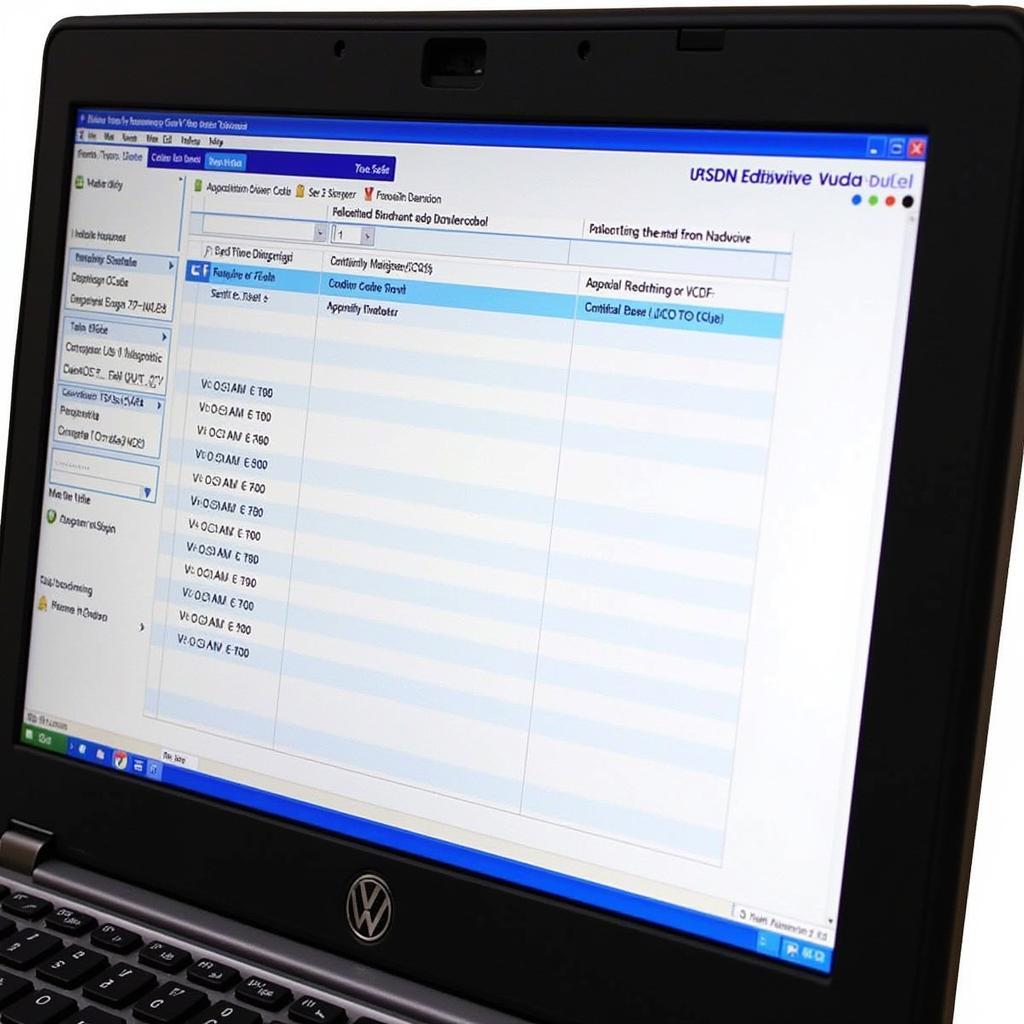Understanding your car’s oil pressure is crucial for maintaining engine health. VCDS (Vag-Com Diagnostic System) provides a powerful tool for monitoring and diagnosing oil pressure issues in Volkswagen, Audi, Seat, and Skoda vehicles. This article will guide you through using VCDS to understand, monitor, and troubleshoot oil pressure problems, empowering you to keep your engine running smoothly.
Understanding Oil Pressure and its Importance
Oil pressure ensures proper lubrication and cooling of your engine’s moving parts. Insufficient oil pressure can lead to catastrophic engine damage, while excessively high pressure can strain seals and gaskets. Monitoring oil pressure with VCDS allows you to identify potential problems early on, preventing costly repairs. Regular checks are essential for maintaining optimal engine performance and longevity.
Using VCDS to Check Oil Pressure
VCDS allows you to access real-time oil pressure readings directly from your car’s engine control unit (ECU). This eliminates the need for external gauges and provides highly accurate data. To check your oil pressure using VCDS, follow these steps:
- Connect your VCDS interface to your car’s OBD-II port.
- Turn the ignition on, but do not start the engine.
- Launch the VCDS software on your computer.
- Select “Select Control Module.”
- Choose “Engine” (usually labeled 01-Engine).
- Go to “Measuring Blocks” (usually group 001).
- Locate the measuring block that displays oil pressure. The specific block number can vary depending on the engine code. You can find this information in the VCDS label files or online resources.
Interpreting VCDS Oil Pressure Readings
Once you’ve located the oil pressure measuring block, you’ll see the real-time pressure value. This value is typically measured in bar or psi. Consult your vehicle’s service manual for the correct oil pressure specifications. Low oil pressure readings indicate a potential problem, such as low oil level, a faulty oil pump, or worn bearings. High readings can suggest a clogged oil filter or a malfunctioning pressure relief valve.
Troubleshooting Low Oil Pressure with VCDS
If your VCDS readings reveal low oil pressure, further investigation is needed. First, check your oil level. If it’s low, top it off and recheck the pressure. If the problem persists, VCDS can help pinpoint the cause. You can use it to monitor other engine parameters, such as oil temperature, which can provide further clues. For instance, unusually high oil temperature combined with low pressure could indicate a failing oil cooler. You can learn more about monitoring oil temperature with vcds oil temperature.
“When diagnosing low oil pressure, it’s vital to consider all related factors,” says automotive engineer, Robert Miller. “VCDS allows us to gather comprehensive data, enabling a more accurate diagnosis.”
Troubleshooting High Oil Pressure with VCDS
High oil pressure, though less common, can also be detrimental. VCDS can help you diagnose this issue by monitoring pressure readings under different engine loads and temperatures. For instance, if the pressure remains consistently high even at idle, a faulty pressure relief valve is a likely culprit. Similarly, if the pressure spikes excessively during acceleration, a clogged oil filter or restricted oil passages could be the problem. Understanding vcds engine measuring blocks is essential for accurate diagnosis.
“High oil pressure can often be traced back to a blockage in the oil system,” explains automotive technician, Sarah Johnson. “VCDS is invaluable for identifying these issues quickly and efficiently.” You might also find our article on vw tiguan 5n vcds codes helpful for further troubleshooting. Similar to oil pressure vcds, understanding how to interpret these codes can be beneficial.
Conclusion
VCDS offers a comprehensive and accurate method for monitoring and diagnosing oil pressure issues in VAG vehicles. By understanding how to use and interpret VCDS data, you can proactively address potential problems, extending the life of your engine and avoiding costly repairs. Regular monitoring of oil pressure is a key element of preventative maintenance.
FAQs
-
What is the normal oil pressure range for my car? Consult your vehicle’s owner’s manual for specific oil pressure specifications.
-
Can I use VCDS to reset my oil pressure light? While VCDS can clear fault codes related to oil pressure sensors, it won’t directly reset the oil pressure light. Addressing the underlying issue causing the light to illuminate is crucial.
-
My oil pressure fluctuates. Is that normal? Some fluctuation is normal, particularly with changes in engine speed and temperature. However, significant and persistent fluctuations warrant further investigation.
-
Can low oil pressure damage my engine? Yes, insufficient oil pressure can lead to severe engine damage due to inadequate lubrication and cooling.
-
Can high oil pressure damage my engine? Yes, excessive oil pressure can damage seals, gaskets, and other engine components.
-
Where can I find more information about using VCDS? Online forums, VCDS documentation, and our article on how to tune 2.0t fsi with vcds air intake can provide additional resources.
-
What should I do if I’m still having oil pressure problems after using VCDS? Consult a qualified mechanic specializing in VAG vehicles for further diagnosis and repair.
Need further assistance? Contact us via Whatsapp: +1 (641) 206-8880, Email: CARDIAGTECH[email protected] or visit us at 276 Reock St, City of Orange, NJ 07050, United States. We have a 24/7 customer support team. You might also find information related to this topic on our website, explore other articles related to VCDS and engine diagnostics for more insights.

